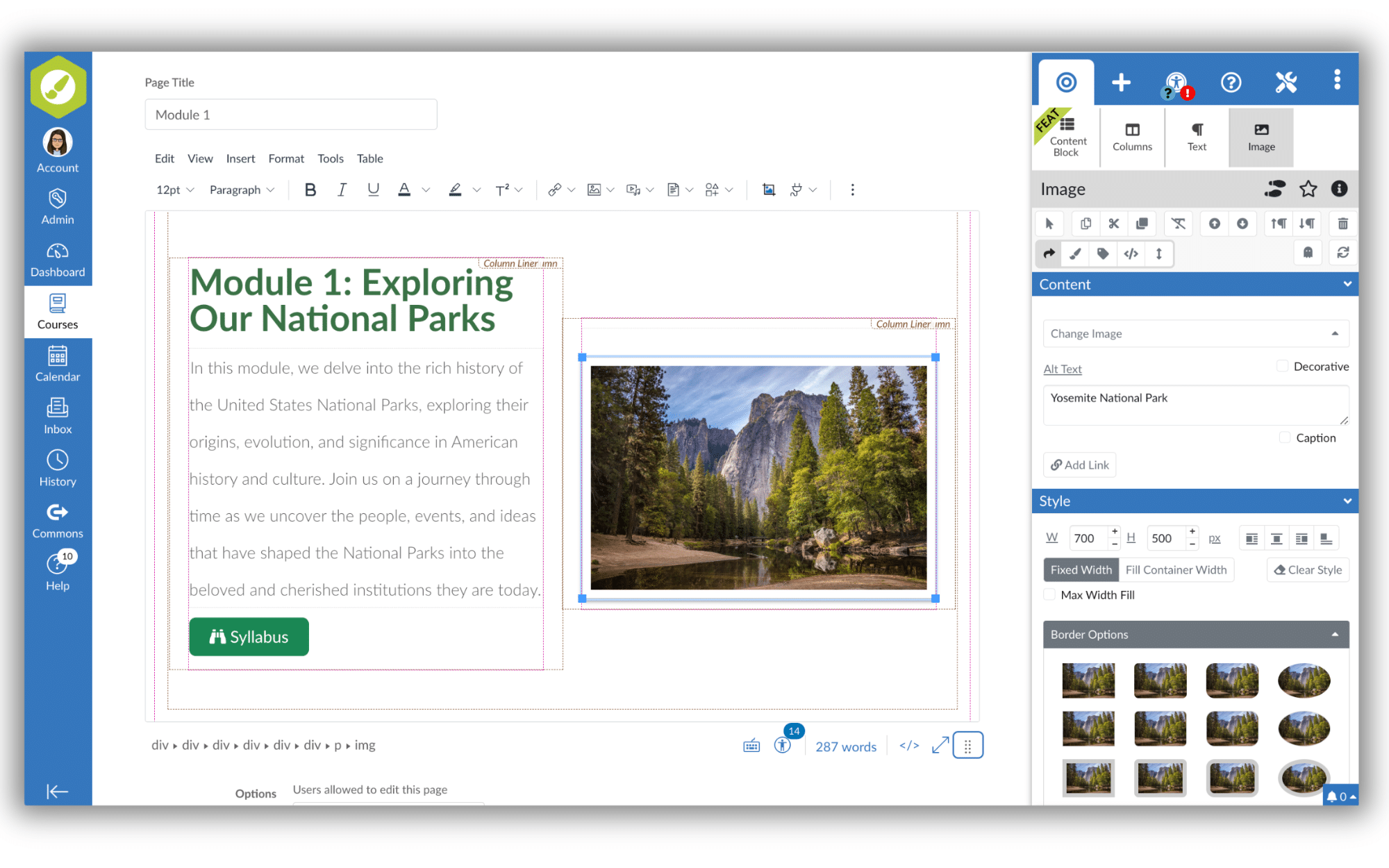Design Matters Digest: April Edition

Are my Canvas Courses Causing Cognitive Overload?
Welcome to the Design Matters Digest, a monthly newsletter that explores various elements of online course design and the research that can help you improve your Canvas courses. This month, we’re looking at the limits of working memory and how course design can reduce cognitive overload.
“Overly burdening working memory is…easy to do, and it can be a major barrier to learning. If overly burdened, there is risk that content will not be understood, information will not be encoded effectively in long term memory, and/or information will be confused or misunderstood.”
(Tindall-Ford et al., 2019)
While it may be understood that you can have too much of a good thing, it can feel complex to design course content that maximizes learning without overwhelming the learner. Here, Cognitive Load Theory and its practical framework can help.
What do we mean by cognitive load?
Cognitive Load Theory explains that working memory has a limit and that when learning processes overload that capacity, transfer to long-term memory is hindered (Sweller et al., 2019). The good news is that effective course design can help learners manage their cognitive load and increase learning efficiency.
Let’s explore some practical ways to reduce cognitive overload when presenting content and some tools that make the process seamless.
Segment and Label Content. Segmenting course content can help learners take in complex information in manageable chunks. Like a content tour guide, the structure and wording of headings direct learner attention and define content segments. At both the module and page level, clear headings reduce the cognitive effort needed to locate and organize important concepts in learners’ working memory.

Separate the Essential from the Optional. It’s tempting to provide an abundance of information or resources in hopes of supporting all learners. Here, research on the Redundancy Effect emphasizes that non-essential content may direct cognitive capacity away from digesting the most critical information. Separate and label optional or supplemental content.

Connect Visuals with Corresponding Text. When learners must attend to two separate items at the same time–such as text and a corresponding image–they utilize more processing capacity (Ayres & Sweller, 2014). Think of a paragraph in Canvas describing an image below it. Learners must hold the information from one element in their mind while scrolling to process the other. Course designers can combat this split-attention effect by presenting words and illustrations together (Mayer et al., 1996), including floating images next to text, layering captions on images, or using labels and headings in charts.

“What we’ve developed [with DesignPLUS] comes back to us through the faculty, too, where the faculty will say to us that they get student feedback saying, ‘This is the best-organized course I’ve ever had. It was so easy to understand. It was so easy to navigate.’”
– Kellie McDonald, Assistant Director
University of Florida, Center for Online Innovation and Production
Learn More: Looking for more ideas for organizing and styling course content? Check out our recent Cidi Spotlight: Too Much Content on a Canvas Page! to watch our instructional designers implement DesignPLUS solutions for a crowded Canvas page. Or, explore the new DesignPLUS Library to find pre-designed templates, content blocks, and more that can be pulled into your Canvas courses using the DesignPLUS Sidebar!
You May Also Be Interested In...
We have two upcoming webinars that will provide more actionable steps you can take with tools from Cidi Labs to help your learners avoid cognitive overload and improve your Canvas courses:
May 9th ~ 11am MT
Quality Matters and Cidi Labs Present: Instructional Designers and the Cloak of Invisibility
University of Texas Arlington instructional designers Dr. Jessica Kahlow and Sarah Saraj were looking for a solution for QM Standards tracking and faculty training that seemed almost magical. Then, they stepped into the realm of course design superpowers and became QM heroes with Cidi Labs’ game-changing tools for Canvas. In this session, you’ll learn to harness your invisibility superpowers to help faculty meet various QM standards using DesignPLUS. They will discuss ways they use hidden key action items to enhance the usability of template pages. They will also discuss ways to expose faculty to DesignPLUS incrementally by using resource courses. Join us as we unveil intention hiding in plain sight! Register Here
May 14th ~ 11am MT
Cidi Spotlight: Homepage First Impressions
You only get one chance to make a first impression with your Canvas course. Make it count by using game-changing tools from Cidi Labs to design a welcoming space for your learners. Join us for a 30-minute live makeover that will take a homepage from bland to BAM with DesignPLUS! Kenneth Larsen, Chief Instructional Designer at Cidi Labs, will demonstrate the research-backed features that help students feel welcome, stay focused and engaged, and know where to go for help. You’ll walk away with ideas to make your homepage’s first impression more informative and inviting. Register Here
Citations:
Ayres P, Sweller J. The Split-Attention Principle in Multimedia Learning. In: Mayer RE, ed. The Cambridge Handbook of Multimedia Learning. Cambridge Handbooks in Psychology. Cambridge University Press; 2014:206-226.
Mayer, Richard & Bove, William & Bryman, Alexandra & Mars, Rebecca & Tapangco, Lene. (1996). When Less Is More: Meaningful Learning From Visual and Verbal Summaries of Science Textbook Lessons. Journal of Educational Psychology. 88. 64-73. 10.1037/0022-0663.88.1.64.
Sweller, John & Van Merrienboer, Jeroen J. G. & Paas, Fred. (1998). Cognitive Architecture and Instructional Design. Educational Psychology Review. 10. 251-. 10.1023/a:1022193728205.
Sweller, J., van Merriënboer, J.J.G. & Paas, F. Cognitive Architecture and Instructional Design: 20 Years Later. Educ Psychol Rev 31, 261–292 (2019). https://doi.org/10.1007/s10648-019-09465-5
Tindall-Ford, S., Agostinho, S., & Sweller, J. (Eds.). (2019). Advances in Cognitive Load Theory: Rethinking Teaching (1st ed.). Routledge. https://doi.org/10.4324/9780429283895
Yeung, A. S., Jin, P., & Sweller, J. (1998). Cognitive Load and Learner Expertise: Split-Attention and Redundancy Effects in Reading with Explanatory Notes. Contemporary Educational Psychology, 23(1), 1-21. https://doi.org/10.1006/ceps.1997.0951

